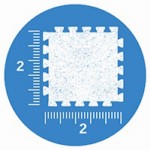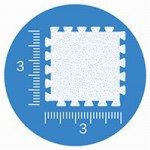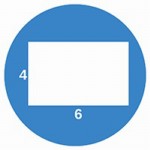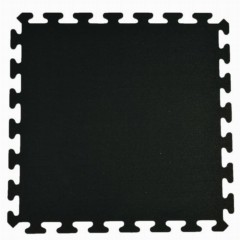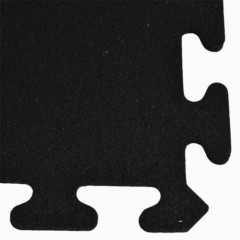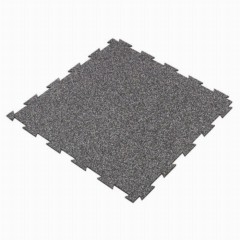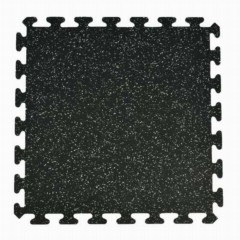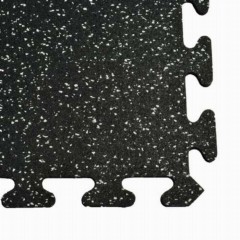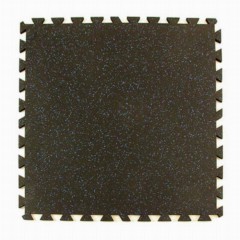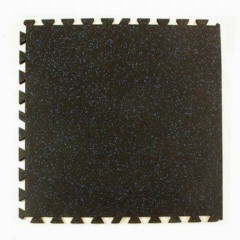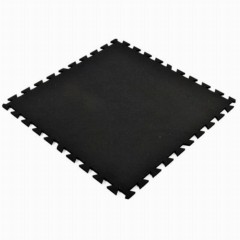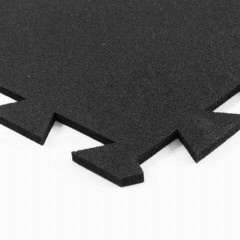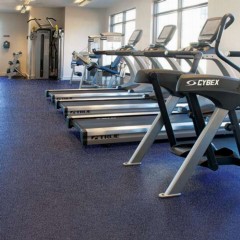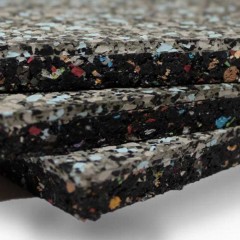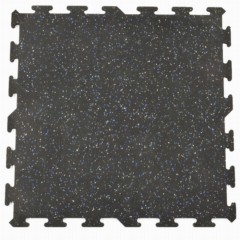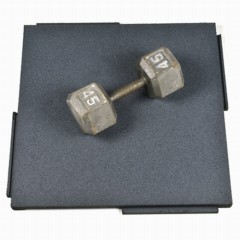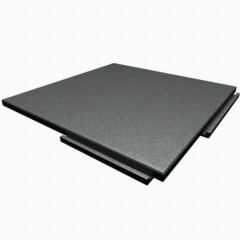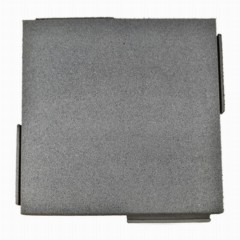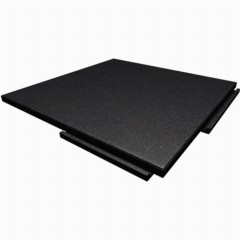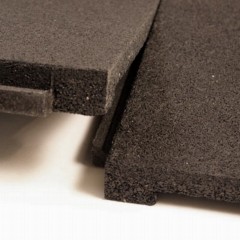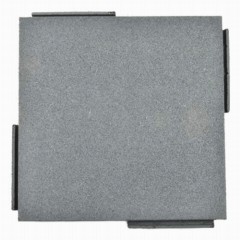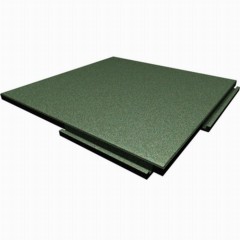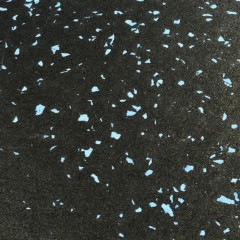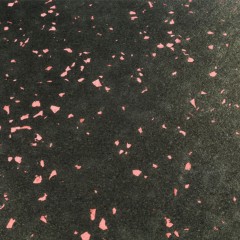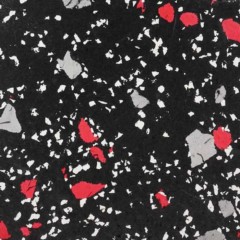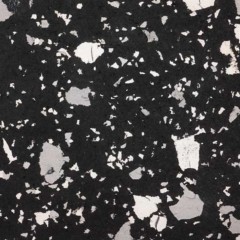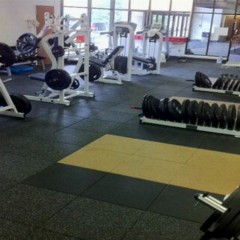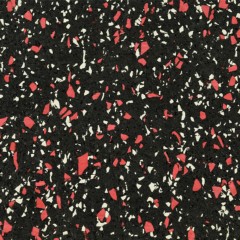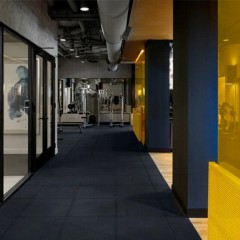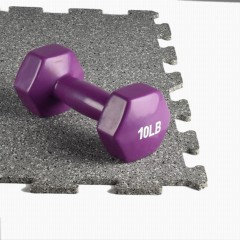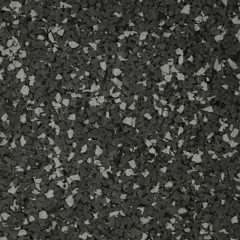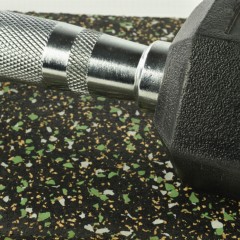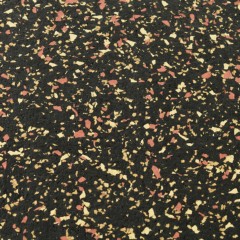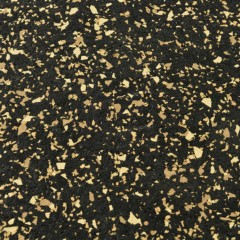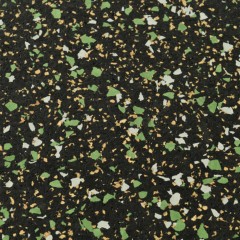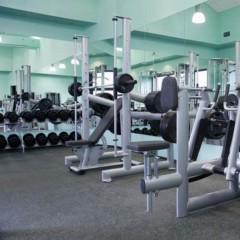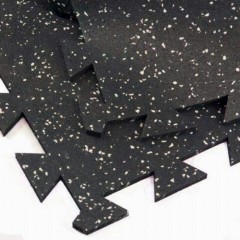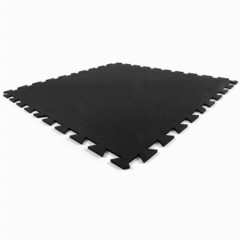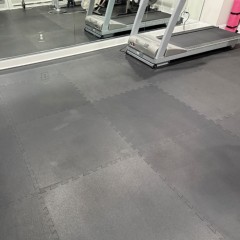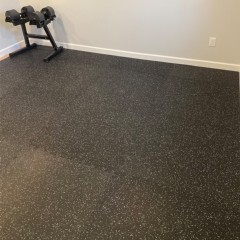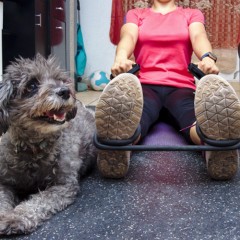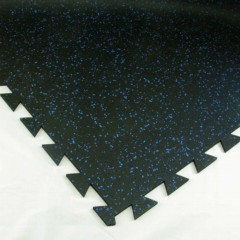Options for Interlocking Rubber Floor Tiles
If the only thing that comes to mind with rubber flooring is a boring black color that’s heavy and smells bad, you need to adjust your thinking. Interlocking rubber floor tiles from Greatmats are among the most popular types of flooring we sell.
We have large and small sizes of this flexible flooring. Our products can work indoors or outdoors while remaining highly durable. Use them at home, at a commercial gym, or anywhere in between with an easy installation process. We even offer a range of tile colors… but if you want black-only rubber interlocking tiles, we have those, too. (Either way, they’re anything but boring!)
Types of Rubber Interlocking Tiles
Rubber interlocking tiles are extremely versatile, allowing you to use them for almost any use case you have in mind.
Thickness Options
We have rubber tiles ranging in thickness from a fraction of an inch to a few inches. Thicker materials have higher durability than thinner materials, but they’re also heavier and more difficult to move around.
When you want more cushioning, such as at a playground, consider our
Sterling Interlocking Playground Tiles, which measure 5 inches in thickness and 2x2 feet in size.
A thinner option that simplifies installation while providing a high level of traction is our
Gmats Interlocking Rubber Tiles at 3/8 of an inch in thickness and 2x2 feet in size.
Color Options
Although we have plenty of black-only interlocking rubber floor tiles, you might be surprised by the various other color options we have.
Our
Blue Sky Interlocking Playground Tiles provide cushioning at 3.25 inches in thickness and are available in colors including black, blue, brown, gray, green, red, and tan. Kids will love the colorful tiles, and you can mix and match colors to create patterns because all colors use the same interlocking edge system.
In a gym, you could use thinner tiles for ease of installation and to provide traction underneath exercise machines. Our
Domination Rubber Interlocking Tiles measure 12 mm in thickness (15/32 of an inch) and are available in colors including light blue, dark blue, gold, gray, green, orange, purple, and red.
Another option is our
Interlocking Color Rubber Floor Tiles, which measure 8 mm in thickness (5/16 of an inch). They’re available in a black base color with a 10% color fleck concentration using blue, light gray, or a blue-and-light-gray combination.
Benefits of Interlocking Rubber Floor Tiles
Interlocking rubber floor tiles give you multiple benefits, including:
- Multiple coverage sizes
- Numerous thicknesses
- Ease of installation
- Some models don’t require adhesive
- Multiple color options
- Protect subfloor from damage
- Eco-friendly recycled rubber material
- Most tiles are made in the United States
- Tiles follow precise measurement tolerances
- Highly durable designs
- Won’t indent under exercise equipment
- Natural slip-resistance
- Waterproof and water-resistant designs
- Provides noise reduction
- Indoor or outdoor usage options
- Easy to clean and maintain
Use Types for Interlocking Rubber Mats
Interlocking rubber mats and tiles are easy to install and usable in a variety of locations, making them a popular choice. Their versatility includes the ability to create a permanent, semi-permanent, or temporary layout. Some of the most common use types include:
- Indoor playgrounds
- Outdoor playgrounds
- Fitness centers
- Weightlifting areas
- Home gyms
- Commercial gyms
- School gyms
- Patio seating areas
- Covering for a deck
- Basements
Interlocking Rubber Floor Tiles Q&A
What are the best interlocking rubber floor tiles?
The
best interlocking rubber flooring tiles will be easy to install, highly durable, and offered at a reasonable price. Our
Geneva Interlocking Rubber Tile product has a jigsaw-puzzle edge that simplifies installation without the need for glue. For outdoor use with a hidden connection edge in commercial locations, the
Sterling Roof Top Tile is available in multiple colorful options and measures 2 inches thick.
Can you use interlocking rubber tiles outside?
Yes,
you can use some interlock rubber tiles outdoors. Interlockable rubberized tiles naturally contain protection against the UV rays of the sun. They can also stand up to rough weather without showing wear and tear. Many of them offer at least 2 inches of thickness, meaning they’re suitable for use in locations where falls are possible, such as near playgrounds.
How do you install interlocking rubber floor tiles on concrete?
To
install interlocking rubber tile flooring on concrete, you’ll be able to go directly over the concrete. You don’t need a barrier layer. Most people will start in the center of the room and work outward when using tiles that have puzzle-style edges on all four sides. If you have some flat-edge tiles or have interlocking border pieces for some of the tiles, you can start in one corner and work outward.
How do you maintain 2x2 interlocking rubber flooring?
To
maintain 2x2 interlocking rubber floor squares, you can just sweep them to remove dry debris and use a neutral pH cleaner to mop them for a more thorough cleaning. Heavy-duty interlocking rubber floor tiles should be waterproof or water-resistant, meaning you can clean them safely. Just avoid oversaturating them.
 $3616 /Tile You Save 18%$9.04/sqftShop$4391 /Tile You Save 18%$10.98/sqftShop$5338 /Tile You Save 18%$13.35/sqftShop$1214 /Tile You Save 19%$3.13/sqftShips Out in 7-10 Working Days SustainableShop$1255 /Tile You Save 20%$3.23/sqftShips Out in 7-10 Working Days SustainableShop$4579 /Tile You Save 14%$11.45/sqftShop$4202 /Tile You Save 15%$10.51/sqftShop$3129 /Tile You Save 19%$8.53/sqftShop$9467 /Tile You Save 20%$11.48/sqftShop$5540 /Tile You Save 20%$6.72/sqftShop$7534 /Tile You Save 19%$9.13/sqftShop$3207 /Tile You Save 20%$3.89/sqftShop$5090 /Tile You Save 19%$6.17/sqftShop$3075 /Tile You Save 20%$3.73/sqftShips Out in 3-5 Working Days SustainableShop$3458 /Tile You Save 19%$4.19/sqftShop
$3616 /Tile You Save 18%$9.04/sqftShop$4391 /Tile You Save 18%$10.98/sqftShop$5338 /Tile You Save 18%$13.35/sqftShop$1214 /Tile You Save 19%$3.13/sqftShips Out in 7-10 Working Days SustainableShop$1255 /Tile You Save 20%$3.23/sqftShips Out in 7-10 Working Days SustainableShop$4579 /Tile You Save 14%$11.45/sqftShop$4202 /Tile You Save 15%$10.51/sqftShop$3129 /Tile You Save 19%$8.53/sqftShop$9467 /Tile You Save 20%$11.48/sqftShop$5540 /Tile You Save 20%$6.72/sqftShop$7534 /Tile You Save 19%$9.13/sqftShop$3207 /Tile You Save 20%$3.89/sqftShop$5090 /Tile You Save 19%$6.17/sqftShop$3075 /Tile You Save 20%$3.73/sqftShips Out in 3-5 Working Days SustainableShop$3458 /Tile You Save 19%$4.19/sqftShop